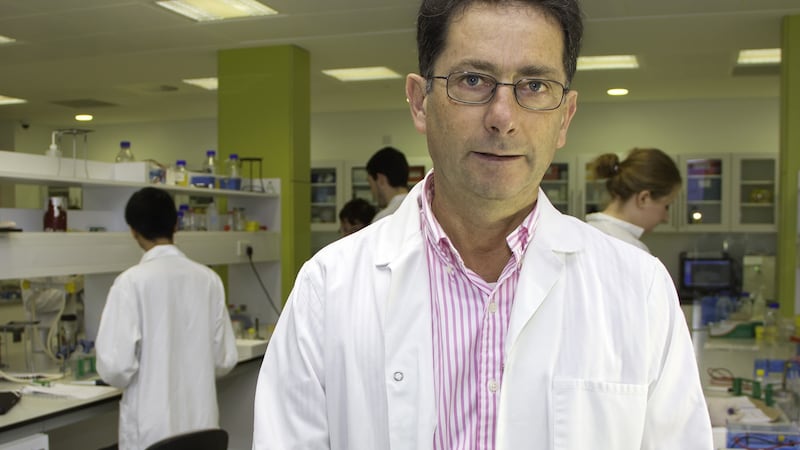The birth control ‘mini pill’ has been found to contain a compound which gives long-term protection against two degenerative eye diseases – glaucoma and retinitis pigmentosa (RP) – according to new research by UCC scientists.
The eye-protective compound was discovered during a trawl through all the compounds approved by the US Federal Drug Agency (FDA) for the treatment of people with eye diseases, explains Tom Cotter, professor of biochemistry at UCC, who conducted the research along with project lead Dr Sarah Roche.
“The one that was best was a compound called norgestrel that is present in the progestin-only pill,” says Prof Cotter. “We found that it prevents the loss of cells in the retina in animal models of retinal degeneration,” he adds.
Norgestrel works as a contraceptive by increasing the level of progesterone in a woman’s bloodstream. That, in turn, thickens the mucus in the woman’s cervix, which makes it more difficult for the sperm to reach and fertilise an egg.
The UCC scientists have now found that norgestrel – the same compound that is used as an effective and common human contraceptive – can, in animal models, also provide protection against some common degenerative diseases of the eye.
Disease
Degenerative eye diseases occur when light-sensitive cells called rods and cones, which are located in the retina at the back of the eye, start to die. The rods and cones do not regenerate and their death leads to progressive loss of vision.
About one in every 4,000 people are effected by RP, or about 1,200 people in Ireland. The compound also protects against glaucoma, which is common in older age groups, with an estimated 3 per cent of Ireland's over 50s affected by it.
“In the early stages of RP, rods are more affected than cones,” explains Prof Cotter. “As the rods die, people experience night blindness and a slow loss of the visual field. The loss of rods eventually leads to a breakdown and loss of cones.”
“In the late stages of RP,” he continues, “as cones die, people lose more of the visual field, developing tunnel vision.
“They may have difficulty performing essential tasks of daily living such as reading, driving, walking without assistance or recognising faces.”

The research that led to the finding that norgestrel provides long-term protection for rods and cones in mice that would normally go blind in a matter of weeks was the result of a collaboration with the University of Alicante.
The findings have just been published in the journal Investigational Ophthalmology and Visual Science.
Remarkably, the scientists found that mice that would normally go blind a few weeks after birth could still see after four months. “This is an enormous step forward,” says Prof Cotter. “The results were so good, we had to go back and look at it again.”
Though four months is not much over a human lifespan, it is a huge chunk of a mouse’s lifespan, he explains, because a mouse in the wild lives, on average, for about one year.
Trials
The fact that norgestrel has already gone through extensive clinical trials in humans before being incorporated into a contraceptive pill should help speed up the time it takes to get approval for use against eye disease, says Prof Cotter.
Scientists will still have to figure out what the dose of the compound needs to be for humans in order to provide protection against eye disease.
“The progestin-only pill has been tested to death for toxicity,” says Prof Cotter. “There is a vast amount of literature on its safety, so I think there would be no real safety issues if we can use the dose that is already there [in the pill].”
Researchers will also have to devise a way to make the drug available to men, because norgestrel – a female hormone – causes feminisation effects in men. “What we would do is see does it work with women first,” says Prof Cotter. “If it works with women then there will be a big push to see if we can find some way of getting it to men.
“I don’t think you would hold it back because there is a problem with men – I think you would push ahead with women,” he adds.
The success of the animal studies means that Prof Cotter and Dr Roche want to secure funding to conduct a small-scale, human clinical trial on norgestrel.
As part of that trial, the scientists would like to test whether the compound can also provide protection against AMD, age-related macular degeneration, which affects at least 7 per cent of people over 50. They suspect it does.

















